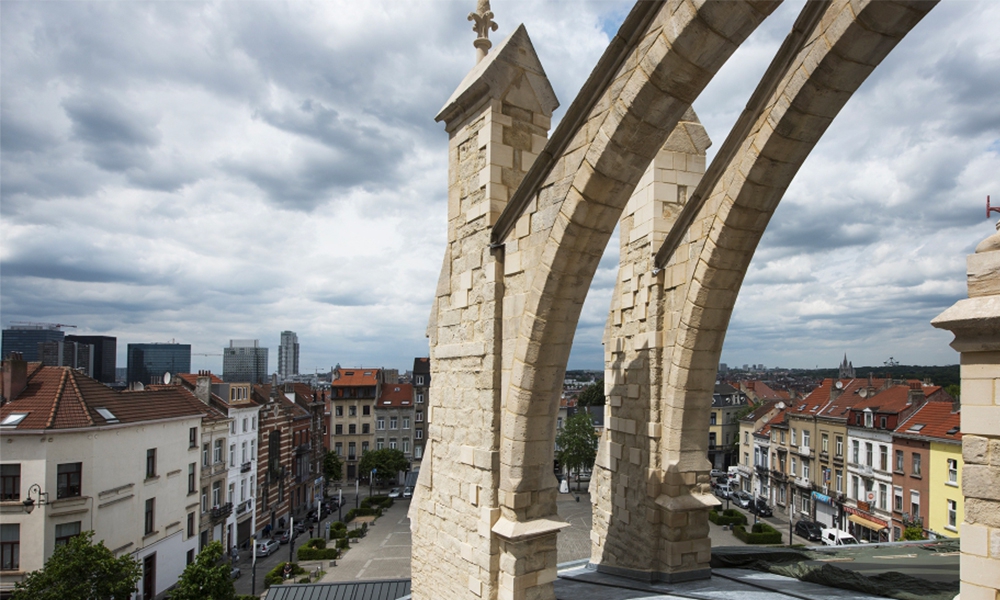Schaerbeek : the church of Saint-Servais regains its immaculate radiance

The church of Saint-Servais
Situated in the perspective of the Louis Bertrand avenue, the church of Saint-Servais was built between 1871 and 1876 following the plans of Gustave-Marie Hansotte in neo-gothic style and basilica plan. It holds the largest organ of the region as well as period furnishings (confessionals, altars…). Besides it is embellished with splendid stained-glass windows from Steyart and Henrionnet workshops.
The intervention of Ma² on the church of Saint-Servais
Covered with a black crust due to pollution but also to the pathological wear of the stone, overgrown here and there, stripped of most of its florets, surrounded by oxidised ironwork fences and deprived of some of its then closed stained glass windows, the church of Saint-Servais presented before renovation a very poor look.
After a historical and pathological study of the structure and a technical study covering two years, Ma² launched in 2016 a renovation campaign concerning the external envelope of the church: stone facades, stained-glass windows, low roofs and ironwork. The result is a balancing act between the desire to intervene in a conservative manner upon the building aiming to ensure the sustainability and the necessary parsimony to respect the budget defined by the contracting authority.
As a matter of fact, in the course of construction, the project manager had to deal with a few surprises…as to discover the state of dislocation of the flying buttresses threatening the stability of the building. Same risk with the church spire: the structural rings in steel as well as the cross of the weather wane being oxidised, they threatened the stone structure that receives the spire, putting at risk the fall of a “broadsword” of some 16 meters long…On the positive side: if the majority of the stained-glass windows had been severely damaged, the quality of those produced by Steyaert was so that with a delicate cleaning, these were not affected.
Finally, the flying buttresses have been cored and reinforced by pneumatic injection. Each type of stone has been the object of a customised restoration and cleaning: white stones by hydro-pneumatic sandblasting, blue stones by sandblasting and decorative stones were treated with more delicate cosmetic care, by micro sandblasting or nebulisation. The stones from Steenokkerzeel cannot be found nowadays as production is finished have been replaced by from Savonnières limestone, cracks have been filled, eroded corners were redesigned, missing stones or too badly damaged have been replaced, inserts have been placed on the column feet or the siding from which the originals were missing … The façade has received the laying of anti-graffiti, sculptors have from the archives redesigned and reconstructed 6 types of florets, so 52 in the whole, the rooster on the spire has been repainted with gold leaf, …In short, the church has regained its magnificence!
Discover the two reports from BX1 here and there as well as the one realised by Bruzz.
Guided tour this Sunday 22 September from 14 p.m. to 17 p.m./ duration 45 minutes.
 Share
Share

 https://www.ma2.be/en/journal/schaerbeek-the-church-of-saint-servais-regains-its-immaculate-radiance-144/
https://www.ma2.be/en/journal/schaerbeek-the-church-of-saint-servais-regains-its-immaculate-radiance-144/